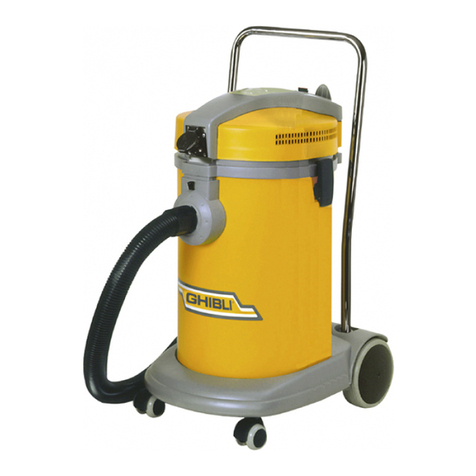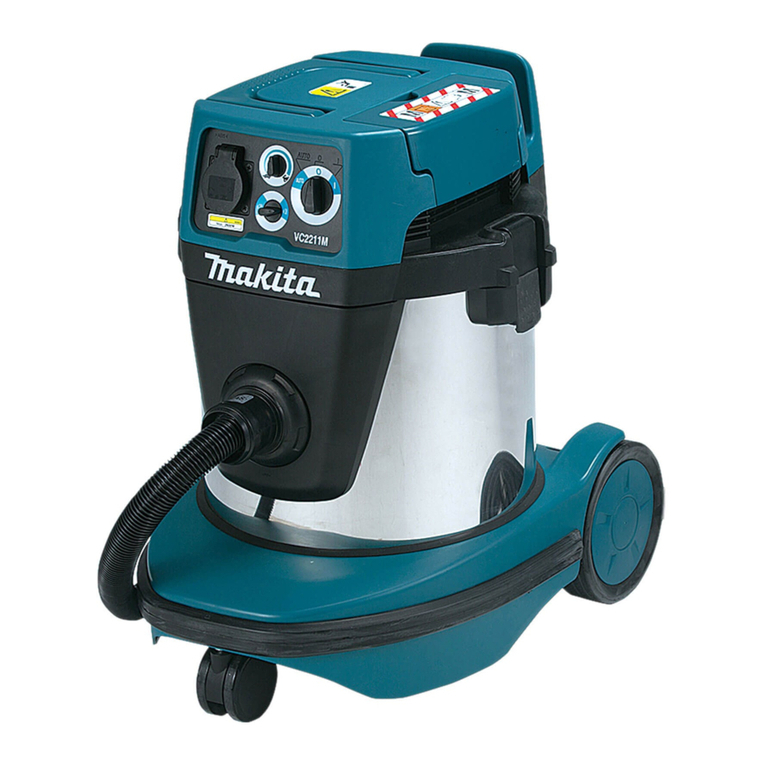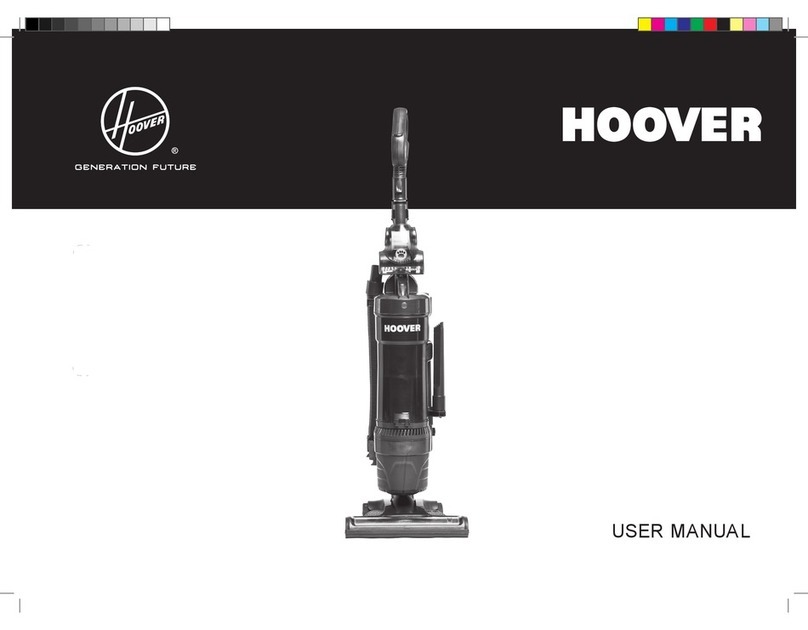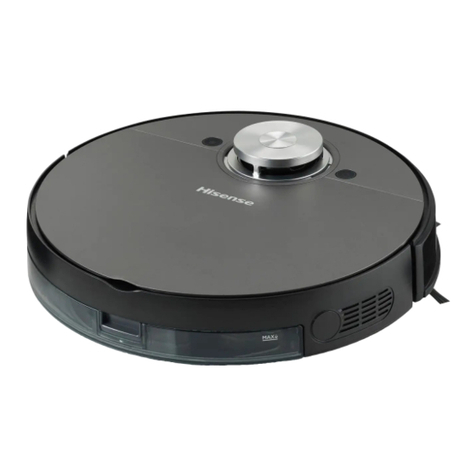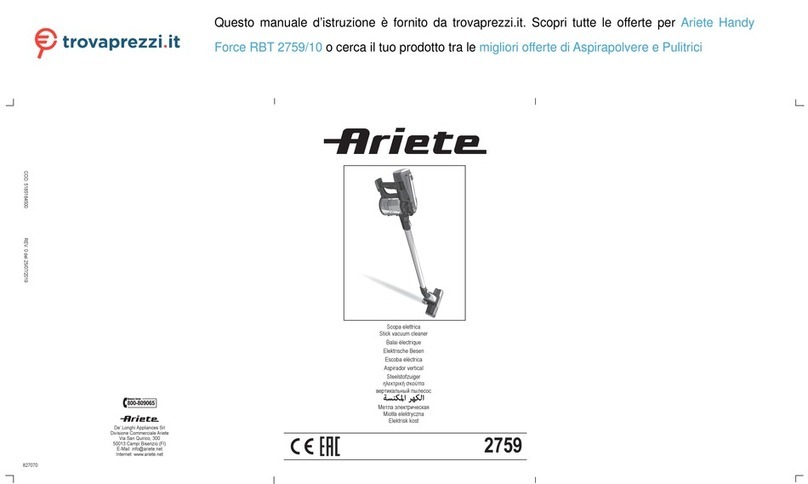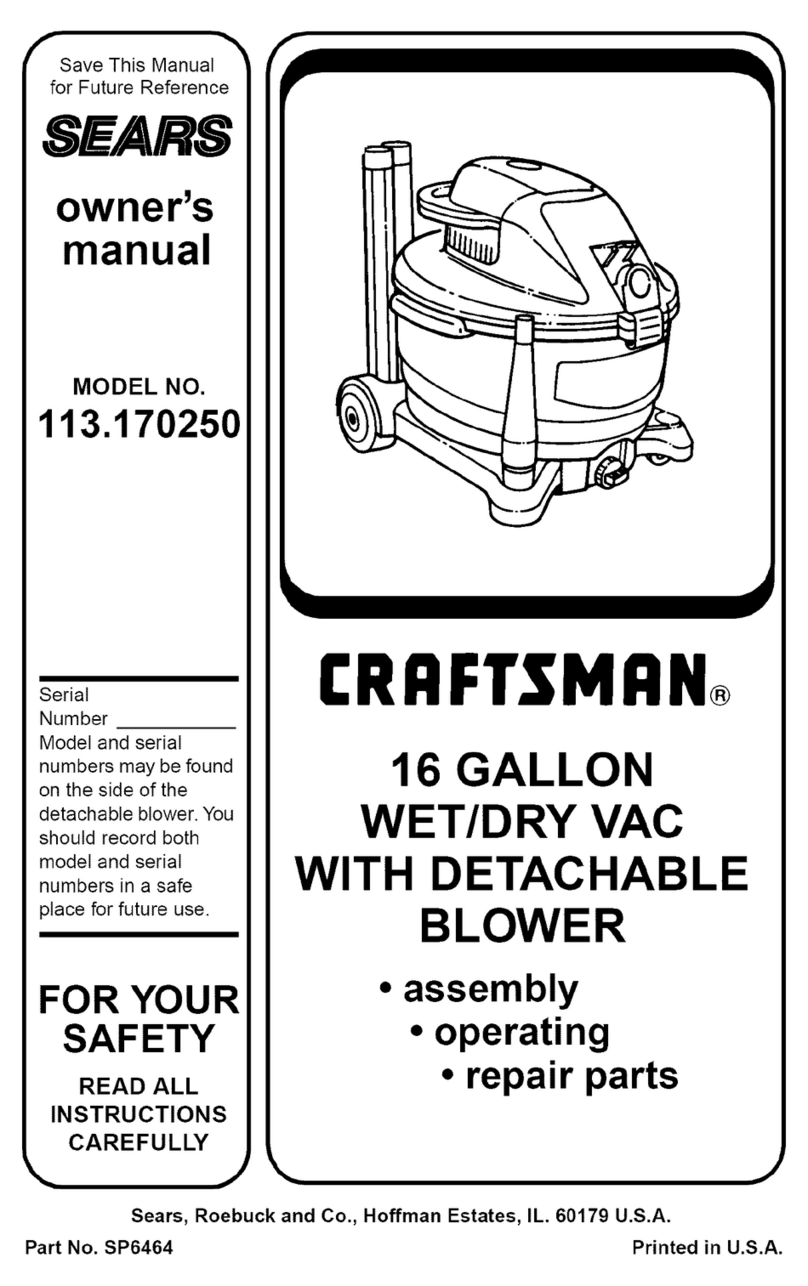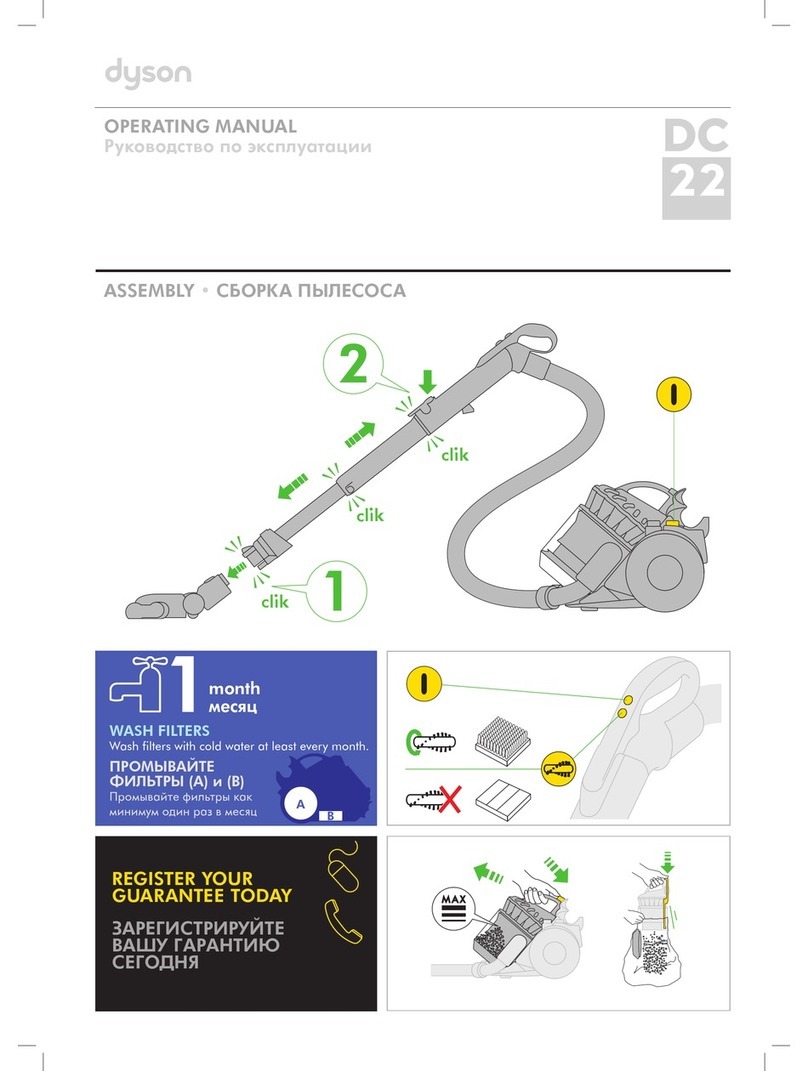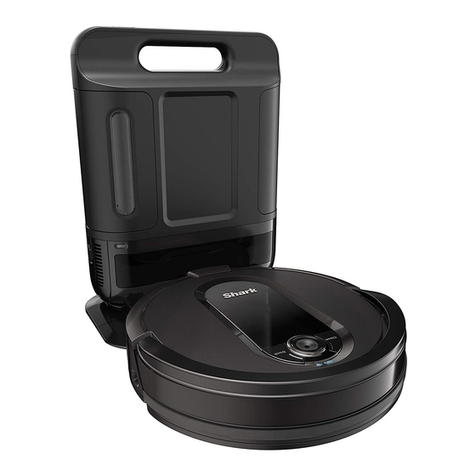Ghibli Wirbel M9 User guide

M9 - M9 / M12 AUTO
CE 35/1 I/ CE 56/2 I
M9 - M9 / M12 AUTO
CE 35/1 I/ CE 56/2 I
IT
Uso e Manutenzione
EN
Use and Maintenance
FR
Utilisation et Entretien
DE
Gebrauch und wartung
ES
Uso y Mantenimiento
PT
Uso e manutenção
NL
Gebruik en Onderhoud
NO
Bruk og vedlikehold
DK
Brug og vedligeholdelse
SV
Användning och underhåll
PL
Obsługa i Konserwacja
CS
Použití a Údržba
SK
Použitie a údržba
TR
Kullanım ve Bakım
HU
Használat és karbantartás
RO
Folosire şi Întreţinere
EL
Χρήση και Συντήρηση
RU
Эксплуатация и обслуживание
HR
Upotreba i održavanje
SR
Upotreba i Održavanje

0 - 2
Mod.
Art.
Cap.ty
Vac mba
Air flow l/s
Nr
3
4
56
7
8
1
2

0 - 3
1 2 3 4 5 6 7 8
IT Produttore Modello Articolo Capacità fusto Capacità aspirazione Portata d’aria N° Matricola Caratteristiche elettriche
EN Manufacturer Model Article
Container capacity
Vacuum Air flow Serial N° Electrical characteristics
FR Producteur Modèle Article
Capacité de la cuve
Capacité d’aspiration Débit d’air N° Matricule Caractéristiques électriques
DE Hersteller Modell Artikel Fassungsvermögen
des Körpers Ansaugleistung Luftdurchsatz Matrikelnr. Elektrische Eigenschaften
ES Fabricante Modelo Artículo Capacidad del bidón
Capacidad de aspiración
Caudal de aire N° Matrícola Características eléctricas
PT Produtor Modelo Artigo Capacidade do
reservatório Capacidade de
aspiração Caudal de ar Número de série Características elétricas
NL Producent Model Artikel Inhoud reservoir Zuigcapaciteit Luchtdebiet Serienummer Elektrische
eigenschappen
NO Produsent Modell Artikkel Beholderkapasitet Sugekapasitet Luftmengde Matrikkelnr. Elektriske egenskaper
DK Fabrikant Model Artikel Beholdervolumen Sugeeffekt Luftmængde Matrikelnummer El-specifikationer
SV Tillverkare Modell Artikel Korgens kapacitet Sugkapacitet Luftflöde Serienummer Elektriska egenskaper
PL Producent Model Artykuł Pojemność
zbiornika Podciśnienie (mbar) Przepływ
powietrza Nr. Fabryczny Właściwości elektryczne
CS Výrobce Model Typ Obsah nádoby Sací výkon
Množství
dopravovaného
vzduchu
Výrobní č. Elektrické údaje
SK Výrobca Model Výrobok Objem nádoby Sací výkon Prietok vzduchu Výrobné č. Elektrické vlastnosti
TR Üretici Model Ürün Gövde kapasitesi Aspirasyon kapasitesi Hava Akışı Seri No Elektriksel Özellikler
HU Gyártó Modell Cikk A szár teljesítménye Szívó teljesítmény Levegőhozam Törzskönyvi szám Elektromos sajátosságok
RO Producător Model Articol Capacitate rezervor Capacitate
aspiraţie Volum aer Nr. Matricol Caracteristici
electrice
EL
Κατασκευαστής
Μοντέλο Προϊόν Χωρητικότητα κάδου Ικανότητα
αναρρόφησης Ροή αέρα Αρ. Μητρώου Ηλεκτρικά
χαρακτηριστικά
RU
Изготовитель
Модель Артикул Емкость бака
Мощность всасывания
Расход воздуха Заводской № Электрические
характеристики
HR Proizvođač Model Proizvod Zapremnina
spremnika Usisni kapacitet Protok zraka Registracijski br. Električna svojstva
SR Proizvođač Model Proizvod Kapacitet postolja Kapacitet usisa
Nosivost vazduha
Br° Proizvoda Električne karakteristike

0 - 4
Fig. 1 Fig. 2 Fig. 3
Fig. 4
Fig. 9
Fig. 10 Fig. 11
Fig. 5 Fig. 6
Fig. 7 Fig. 8
Fig. 12
2
9
9
10
11
17
10
1
3
4
5
7
6
8
16
13
13
14
A
A
14
12
15

0 - 5
PUMP
MOTOR 2
MOTOR 1
OFF OFF OFF
ON
ON
ON
19
18
Fig. 13 Fig. 14
Fig. 16
Fig. 17
Fig. 19
Fig. 18
Fig. 20
28
30
31
34
Fig. 21
Fig. 22
22
35
21
20
22
23
25
24 Fig. 15
26
37
36
27
29
39 40
38
32 33
34

0 - 6
44
51
45
3
Fig. 30 Fig. 31
Fig. 29
48
49
Fig. 26
Fig. 23 Fig. 24 Fig. 25
Fig. 28Fig. 27
Fig. 23
41
38
26
42
43
46
47
50
26

0 - 7
IT
EN
FR
DE
ES
PT
Italiano............................................................. I -1
(Istruzioni originali)
English......................................................... EN -6
(Translation of original instructions)
Français..................................................... FR -11
(Traduction des instructions d’origine)
Deutsch ..................................................... DE -16
(Übersetzung der Originalanleitung)
Português ...................................................PT -26
(Tradução das instruções originais)
Español...................................................... ES -21
(
Traducción de las instrucciones originales
)
DK
HU
NL
PL
SV
TR
Dansk ........................................................ DK -41
(Oversættelse af original vejledning)
Magyar.......................................................HU -71
(Eredeti utasítások fordítása)
Nederlands .................................................NL -31
(vertalinig van de originele instructies)
Polski..........................................................PL -51
(Tłumaczenie z oryginalnej instrukcji obsługi)
Türkçe........................................................ TR -66
(Orijinal talimatların çevirisi)
Svenska..................................................... SV -46
(
Översättning av originalinstruktionerna
)
CS
HR
SK
RO
EL
RU
Česky......................................................... CS -56
(Překlad originálního návodu)
Hrvatski......................................................HR -91
(Prijevod originalnih uputa)
Slovenčina................................................. SK -61
(Preklad originálnych pokynov)
Română.....................................................RO -76
(Traducerea instrucţiunilor originale)
Русский.......................................................RU -86
(Перевод оригинальной инструкции)
Ελληνικά.......................................................EL -81
(Μετάφραση των αρχικών οδηγιών)
Srpski......................................................... SR -96
(Prevod originalnih uputstava)
NO Norsk .........................................................NO -36
(Oversettelse av originalinstruksjonene)
SR


IT
I - 1
CARATTERISTICHE TECNICHE
Singolo motore Doppio motore
Tensione Vedi targhetta dati
Potenza motore 1200 W 1200 W + 1200 W
Livello sonoro 60 dB(A)
Depressione 240 mbar 230 mbar
Capacità utile serbatoio di
recupero 35 l 56 l
Capacità serbatoio
detergente
12 l
Dimensioni 650 x 495 x 825 H mm 730 x 520 x 925 H mm
Peso 17 kg 25 kg
Accessori Ø 36 mm Ø 40 mm
PREPARAZIONE
APPARECCHIO
Aspirapolvere
Per apparecchi dotati di adeguati accessori.
- Sganciare le leve (1 Fig.1) e rimuovere
il coperchio (2 Fig.2) completo di gruppo
motore.
- Rimuovere il filtro (3 Fig.3) in poliestere.
- Controllare che all’interno dell’apparec-
chio sia montato il sacchetto in carta (4
Fig.3).
- Se il sacchetto in carta (4 Fig.3) non è
presente, montarlo agendo come segue:
Sganciare il tappo (5 Fig.4)
Calzare la ghiera in plastica (6 Fig. 5) del
sacchetto in carta nella bocchetta (7 Fig.
5) fino a sentire il click di aggancio della
ghiera nella gola (8 Fig. 5)
- Rimontare il filtro (3 Fig.3) in poliestere.
- Rimontare il coperchio (2 Fig.2) e bloc-
carlo tramite le leve (1 Fig.1).
- Introdurre, fino a finecorsa, il manicotto
(9 Fig. 6) del tubo di aspirazione nella
bocchetta (10 Fig. 6) presente sul fusto.
- Per sganciare il manicotto (9 Fig. 7) spo-
stare la levetta (11 Fig. 7) in senso orario
quindi tirare verso l’esterno il manicotto
(9 Fig. 7).
- Agganciare all’impugnatura (12 Fig.8) del
tubo flessibile la prolunga (13 Fig.8).
TIPO D’USO
Questo apparecchio è stato concepito per il
lavaggio a spruzzo ed estrazione di qualsiasi
tipo di tessuto, di moquette, poltrone sedili
auto, pavimenti, ecc...
É possibile l’utilizzo come aspirapolvere e
aspiratore solidi e liquidi con i dovuti acces-
sori a richiesta.
Solo per questi utilizzi è stato concepito.
PERICOLO:
Il costruttore non può essere ritenuto re-
sponsabile per eventuali danni dovuti ad
un uso improprio o scorretto.
Qualsiasi altro utilizzo solleva il costrutto-
re da responsabilità per danni a persone
e/o cose e fa decadere qualsiasi condizio-
ne di garanzia.
USO SCORRETTO
Non utilizzare l’apparecchio per:
- Aspirare sostanze infiammabili, esplosi-
ve, corrosive, tossiche.
- Aspirare sostanze calde.
- Non utilizzare l’apparecchio in versione
aspiraliquidi per aspirare polveri e vice-
versa.
Non utilizzare l’apparecchio in ambienti con
rischio di esplosione.

ITIT
I - 2
- Agganciare le due prolunghe rigide (13 e
14 Fig. 9), facendo coincidere i due riferi-
menti (A Fig. 9).
- Agganciare alle prolunghe rigide (14
Fig.10) l’accessorio voluto (bocchet-
ta di aspirazione, spazzola a pennello,
bocchetta a lancia, bocchetta pavimenti
ecc..
NOTA:
Tramite l’impugnatura è possibile regolare la
forza di aspirazione agendo sulla ghiera (15
Fig.11).
Aprendo la nestrella (16 Fig.11) si ha una
minore azione aspirante.
Aspiraliquidi
Per apparecchi dotati di adeguati accessori.
- Sganciare le leve (1 Fig.1) e rimuovere
il coperchio (2 Fig.2) completo di gruppo
motore.
- Rimuovere il filtro (3 Fig.3) in poliestere
se presente.
- Rimuovere il sacchetto in carta (4 Fig.3)
se presente.
- Rimontare il coperchio (2 Fig. 2) e bloc-
carlo tramite le leve (1 Fig.1).
- Introdurre, fino a finecorsa, il manicotto
(9 Fig. 6) del tubo di aspirazione nella
bocchetta (10 Fig. 6) presente sul fusto.
- Per sganciare il manicotto (9 Fig. 7) spo-
stare la levetta (11 Fig. 7) in senso orario
quindi tirare verso l’esterno il manicotto
(9 Fig. 7).
- Agganciare all’impugnatura (12 Fig.8) del
tubo flessibile la prolunga (13 Fig.8).
- Agganciare le due prolunghe rigide (13 e
14 Fig. 9), facendo coincidere i due riferi-
menti (A Fig. 9).
- Agganciare alle prolunghe rigide (14
Fig.10) l’accessorio voluto (bocchetta pa-
vimenti ecc..)
NOTA:
Tramite l’impugnatura è possibile regolare la
forza di aspirazione agendo sulla ghiera (15
Fig.11).
Aprendo la nestrella (16 Fig.11) si ha una
minore azione aspirante.
Lavaggio ad estrazione
- Introdurre, fino a finecorsa, il manicotto
(17 Fig. 12) del tubo di aspirazione nella
bocchetta (10 Fig. 12) presente sul fu-
sto.
- Per sganciare il manicotto (17 Fig. 12)
spostare la levetta (11 Fig. 7) in senso
orario quindi tirare verso l’esterno il mani-
cotto (17 Fig. 12).
- Collegare il tubo (18 Fig. 13) di mandata
detergente al raccordo rapido (19 Fig.13);
per sganciarlo spingere il raccordo rapido
(19 Fig.13) verso l’interno.
- Collegare il tubo (20 Fig. 14) di aspira-
zione detergente al raccordo rapido (21
Fig.14); per sganciarlo spingere il raccor-
do rapido (21 Fig.14) verso l’interno.
- Introdurre la bocchetta tessuti (22 Fig.15)
nel tubo flessibile (23 Fig.15).
- Collegare il tubo del detergente (24
Fig.15) al raccordo rapido (25 Fig.15)
presente nel tubo flessibile; per sganciar-
lo spingere il raccordo rapido (25 Fig.15)
verso il tubo.
- Versare nel serbatoio (26 Fig. 16) il de-
tergente necessario per il lavaggio.
NOTA:
Per il dosaggio del detergente fare riferimen-
to alle istruzioni del produttore.
USO DELL’APPARECCHIO
- L’apparecchio è dotato di ruote e quindi
durante l’utilizzo può essere trascinato
tramite il tubo flessibile, oppure spinto
tramite il maniglione (27 Fig. 17)
- Per il suo sollevamento inserire le dita
della mano nell’apposita maniglia (28
Fig.18) ricavata sulla parte superiore del
coperchio per la versione motore singolo
oppure in due persone tramite le maniglie
(29 Fig. 17)
Avviamento dell’apparecchio
- Inserire la spina (30 Fig.19) nella presa di
corrente.

IT
I - 3
Motore singolo
- Premere l’interruttore (31 Fig.20) su “I”
per avviare il motore di aspirazione, l’in-
terruttore si illumina.
Doppio motore
- A seconda della potenza richiesta è pos-
sibile avviare un solo motore premendo
l’interruttore (32 Fig.20) su “I” oppure en-
trambe gli interruttori (32 e 33 Fig. 20) se
è richiesta una maggiore forza aspirante.
Con interruttore premuto il relativo pul-
sante si illumina.
- Per il lavaggio ad estrazione premere l’in-
terruttore (34 Fig.20) su “I” per avviare la
pompa detergente, l’interruttore si illumi-
na.
Lavaggio tessuti / moquette
(Lavaggio ad estrazione)
NOTA:
Il funzionamento del motore di aspirazione e
della pompa detergente sono indipendenti e
quindi è possibile:
- effettuare il lavaggio dei tessuti o della
moquette avviando solo la pompa deter-
gente;
- lavare e contemporaneamente aspirare il
liquido avviando contemporaneamente la
pompa detergente e l’aspirazione;
- aspirare liquidi avviando solo il motore di
aspirazione.
- Avviare l’aspirazione e la pompa deter-
gente premendo sui relativi interruttori
(31 - 34 Fig.20) o (32 - 33 - 34 Fig. 20) a
seconda del modello.
- Appoggiare la bocchetta (22 Fig. 21) sul
tessuto premendo leggermente quindi
premere la leva (35 Fig.21), per erogare
il detergente, rilasciare per fermare l’ero-
gazione.
- Il detergente erogato lava i tessuti o la
moquette e il liquido sporco viene aspira-
to nel serbatoio dell’apparecchio.
Per sporchi intensi si consiglia di eroga-
re il detergente sulla parte sporca senza
aspirarlo lasciandolo agire per qualche
secondo quindi ripassare lavando e api-
rando.
NOTA:
Per evitare la rottura della pompa detergen-
te, si consiglia di fermare il funzionamento
della stessa, agendo sul relativo interruttore,
quando non viene effettuato il dosaggio per
alcuni minuti.
NOTA:
Quando il serbatoio di recupero è pieno si ha
un aumento di rumore e l’apparecchio non
aspira più, quindi spegnere l’apparecchio e
svuotare il serbatoio come descritto nei rela-
tivi paragrafi
Spegnimento dell’apparecchio
- Premere gli interruttori (31 - 34 Fig.20) o
(32 - 33 - 34 Fig. 20) su “0” per spegnere
l’apparecchio; le lampade presenti sugli
interruttori si spengono.
- Staccare la spina (30 Fig.19) dalla presa
di corrente.
- Avvolgere il cavo (36 Fig.16) e aggan-
ciarlo nell’apposita sede (37 Fig.16).
PULIZIA E MANUTENZIONE
PERICOLO:
Prima di effettuare qualsiasi operazione
di manutenzione rimuovere la spina dalla
presa di corrente.
Rimozione e sostituzione sacchetto
raccogli polvere in carta
(se presente)
- Sganciare le leve (1 Fig.1) e rimuovere il
coperchio (2 Fig.2) completo di motore.
- Rimuovere il filtro (3 Fig.3) in poliestere.
- Togliere il sacchetto in carta raccogli pol-
vere (4 Fig.3), chiuderlo tramite il tappo
(5 Fig. 4) e sostituirlo come indicato in
precedenza.
- Rimontare il tutto procedendo in senso
inverso allo smontaggio.

ITIT
I - 4
Svuotamento serbatoio di recupero
- Posizionarsi su una piletta di scarico con
l’apparecchio.
- Sganciare il tubo di scarico (38 Fig. 22)
dal relativo supporto.
- Svitare il pomello (39 Fig. 22) e rimuove-
re il tappo (40 Fig. 22) del tubo di scarico
(38 Fig. 22) e svuotare il liquido contenu-
to nel serbatoio di recupero (41 Fig.23).
- A scarico avvenuto rimontare il tutto pro-
cedendo in senso inverso
Pulizia gionaliera
Controllo e pulizia filtro in poliestere
(se presente)
- Sganciare le leve (1 Fig.1) e rimuovere il
coperchio (2 Fig.2) completo di motore.
- Rimuovere il filtro (3 Fig. 3) in poliestere.
- Pulire il filtro (3 Fig.24) dall’interno verso
l’esterno con un getto d’aria; è possibile
lavare il filtro (3 Fig. 24) in acqua tiepi-
da e rimontarlo solo dopo una completa
asciugatura, se si presenta troppo sporco
sostituirlo
- Rimontare il tutto procedendo in senso
inverso allo smontaggio.
Pulizia apparecchio
- Pulire il corpo apparecchio utilizzando un
panno umido d’acqua o detergente neu-
tro.
- Rimuovere la testata come indicato in
precedenza e pulire l’interno del serbato-
io con acqua corrente lasciando aperto il
tubo di scarico (38 Fig. 23) quindi rimon-
tare il tutto procedendo in senso inverso
allo smontaggio.
PERICOLO:
Non lavare l’apparecchio con getti d’ac-
qua.
Lavaggio circuito dosaggio detergente
Alla fine della lavorazione giornaliera è ne-
cessario lavare il circuito di dosaggio deter-
gente per evitare che si intasi agendo come
segue:
- Scaricare la pressione dal circuito pre-
mendo, con pompa di dosaggio spenta,
la leva (35 Fig. 21)
- Scollegare il tubo di aspirazione deter-
gente (20 Fig.14).
- Rimuovere il contenitore del detergente
(26 Fig.25) sollevandolo tramite l’apposi-
ta maniglia (42 Fig. 25).
- Svuotare il liquido residuo in un idoneo
contenitore.
- Lavare l’interno del contenitore detergen-
te con acqua corrente.
- Rimontare il contenitore detergente ag-
ganciandolo all’apposita staffa (43 Fig.
25) fissata al serbatoio.
- Collegare il tubo (20 Fig. 14) di aspira-
zione detergente al raccordo rapido (21
Fig.14).
- Versare nel contenitore detergente ac-
qua pulita, collegare elettricamente l’ap-
parecchio e avviare la pompa dosaggio
premendo l’interruttore (34 Fig.20).
- Pulire il circuito premendo la leva (35
Fig.21).
- Erogare dalla bocchetta il liquido fino a
che dall’ugello fuoriesce acqua pulita.
- Svuotare l’acqua contenuta nel serbatoio
detergente come descritto in preceden-
za.
Controlli periodici
Controllo filtro uscita aria
- Svitare le viti (44 Fig.26) e rimuovere il
coperchietto (45 Fig.26).
- Rimuovere la spugnetta filtro (46 Fig.27)
e le spugnette bugnate (47 Fig. 28).
- Pulire le spugnette con un getto d’aria
(Fig.29).
È possibile lavare le spugnette filtro in
acqua tiepida e rimontarle solo dopo una
completa asciugatura; se si presentano
troppo sporche sostituirle.
- Rimontare il tutto procedendo in senso
inverso allo smontaggio.
Pulizia ugello erogatore detergente
Se si nota che l’erogazione del detergente
non avviene in modo uniforme è necessario
pulire l’ugello come descritto di seguito:

IT
I - 5
- Rimuovere la ghiera (48 Fig. 30).
- Rimuovere l’ugello (49 Fig. 30) e pulirlo
in acqua corrente, se si presenta intasato
utilizzare uno spillo facendo attenzione a
non deformare la sagoma dell’ugello.
- Rimontare il tutto procedendo in senso
inverso.
Pulizia filtro aspirazione detergente
Se si nota che il detergente non viene aspi-
rato correttamente è necessario controllare e
pulire il filtro di aspirazione posizionato all’in-
terno del serbatoio detergente.
- Estrarre il tubetto (50 Fig. 31) dal serba-
toio (26 Fig. 31)
- Rimuovere il filtro (51 Fig. 31) e lavarlo
in acqua corrente se si presenta troppo
intasato è necessario sostituirlo.
- Rimontare il tutto procedendo in senso
inverso.
RICAMBI
Mod. motore singolo
Conf. 10 sacchetti filtro carta
Cod. 6830030
Filtro in poliestere Cod. 6730000
PROBLEMA CAUSA RIMEDIO
Aspiratore non funziona. Interruttore non premuto.
Spina non inserita.
Mancanza corrente.
Premere l’interruttore.
Inserire la spina nella presa
di corrente.
Verificare la linea di
alimentazione.
L’aspirazione non è soddi-
sfacente.
Sacchetto in carta pieno.
Elementi filtranti intasati.
Accessori o tubi otturati.
Racla bocchetta aspirazione
usurata o rovinata.
Sostituire il sacchetto raccogli
polvere.
Pulire gli elementi filtranti.
Controllare e pulire il tubo
flessibile e la bocchetta di
aspirazione.
Controllare e sostituire la
racla
Erogazione detergente non
uniforme
Ugello otturato
Filtro otturato
Pulire ugello
Pulire il filtro di aspirazione
Erogazione detergente non
funziona
Interruttore non premuto
Termica di protezione
inserita
Premere l’interruttore
Attendere circa 30 minuti per
il ripristino automatico

ITEN
EN - 6
TECHNICAL CHARACTERISTICS
Single motor Double motor
Voltage See data plate
Motor power 1200 W 1200 W + 1200 W
Sound level 60 dB(A)
Vacuum 240 mbar 230 mbar
Recovery tank useful
capacity 35 l 56 l
Detergent
tank capacity
12 l
Dimensions 650 x 495 x 825 H mm 730 x 520 x 925 H mm
Weight 17 kg 25 kg
Accessories Ø 36 mm Ø 40 mm
PREPARING
THE APPLIANCE
Vacuum cleaner
For appliances equipped with suitable acces-
sories.
- Release the levers (1 Fig. 1) and remove
the cover (2 Fig. 2) complete with the mo-
tor unit.
- Remove the polyester filter (3 Fig. 3).
- Check that the paper bag (4 Fig. 3) is in
place inside the appliance.
- If the paper bag (4 Fig.3) is not present,
mount it as follows:
Release the cap (5 Fig.4)
Fit the plastic ring nut (6 Fig. 5) of the pa-
per bag into the nozzle (7 Fig. 5) until you
hear the ring nut click into the groove (8
Fig. 5)
-
Reassemble the polyester filter (3 Fig. 3).
- Place the cover back on (2 Fig. 2) and
lock it using the levers
(1 Fig. 1)
.
- Insert, as far as possible, the sleeve (9
Fig. 6) of the suction hose into the nozzle
(10 Fig. 6) on the drum.
- To release the sleeve (9 Fig. 7) turn the
lever (11 Fig. 7) clockwise and then pull
the sleeve outwards (9 Fig. 7).
- Attach the extension (13 Fig. 8) to the
handle of the flexible hose (12 Fig. 8).
TYPE OF USE
This appliance was designed for the spray
and extraction cleaning of any type of fabric,
carpet, car seats, floors etc.
It can be used as a vacuum cleaner and or
solid and liquid suction unit with the appropri-
ate accessories upon request.
It has only been designed for these purpos-
es.
DANGER:
The manufacturer can not be held respon-
sible for any damage due to improper or
incorrect use.
Any other use releases the manufacturer
from liability for harm to persons and/or
property and invalidates any warranty
condition.
IMPROPER USE
Do not use the appliance to:
- Aspirate flammable, explosive, corrosive
and toxic substances.
- Aspirate hot substances.
- Do not use the appliance in liquid suction
mode to suction powder and vice versa.
Do not use the appliance in areas at risk of
explosion.

EN
EN - 7
- Attach the two rigid extensions (13 and
14 Fig. 9), matching up the two referenc-
es (A Fig. 9).
- Attach the desired accessory (14 Fig.10)
(suction nozzle, dusting brush, crevice
tool, floor nozzle etc.)
NOTE:
Using ergonomic handle it is possible to ad-
just the suction force using the ring nut (15
Fig.11).
Opening up the window (16 Fig. 11) gives
lower suction power.
Liquid suction
For appliances equipped with suitable acces-
sories.
- Release the levers (1 Fig. 1) and remove
the cover (2 Fig. 2) complete with the mo-
tor unit.
- Remove the polyester filter (3 Fig. 3) if
present.
- Remove the paper bag (4 Fig.3) if
present.
- Place the cover back on (2 Fig. 2) and
lock it using the levers (1 Fig. 1).
- Insert, as far as possible, the sleeve (9
Fig. 6) of the suction hose into the nozzle
(10 Fig. 6) on the drum.
- To release the sleeve (9 Fig. 7) turn the
lever (11 Fig. 7) clockwise and then pull
the sleeve outwards (9 Fig. 7).
- Attach the extension (13 Fig. 8) to the
handle of the flexible hose (12 Fig. 8).
- Attach the two rigid extensions (13 e 14
Fig. 9), matching up the two references
(A Fig. 9).
- Attach the desired accessory (floor noz-
zle etc.) to the rigid extensions (14 Fig.
10)
NOTE:
Using ergonomic handle it is possible to ad-
just the suction force using the ring nut (15
Fig.11).
Opening up the window (16 Fig. 11) gives
lower suction power.
Extraction washing
- Insert, as far as possible, the sleeve (17
Fig. 12) of the suction hose into the noz-
zle (10 Fig. 12) on the drum.
- To release the sleeve (17 Fig. 12) turn
the lever (11 Fig. 7) clockwise and then
pull the sleeve outwards (17 Fig. 12).
- Connect the (18 Fig. 13) detergent deliv-
ery hose to the quick coupling (19 Fig.13);
to release it push the quick coupling (19
Fig.13) inwards.
- Connect the (20 Fig. 14) detergent suc-
tion hose to the quick coupling (21 Fig.14);
to release it push the quick coupling (21
Fig.14) inwards.
- Insert the fabric nozzle (22 Fig.15) into
the flexible hose (23 Fig.15).
- Connect the detergent hose (24 Fig.15)
to the quick coupling (25 Fig.15) on the
flexible hose; to release it push the quick
coupling (25 Fig.15) towards the hose.
- Pour into the tank (26 Fig. 16) the deter-
gent necessary for cleaning.
NOTE:
For detergent dosing refer to the manufac-
turer’s instructions.
USING THE APPLICANCE
- The appliance is fitted with wheels and
can therefore be pulled along using the
flexible hose, or pushed with the handle
(27 Fig. 17)
- To lift it up insert your fingers under the
dedicated handle (28 Fig.18) on the top
of the cover of the single version motor or
lift with the help of two people using the
handles (29 Fig. 17)
Starting up the appliance
- Insert the plug (30 Fig.19) into the socket.

ITEN
EN - 8
Single motor
- Push the switch (31 Fig.20) on “I” to start
the suction motor; the switch lights up.
Double motor
- Depending on the power required it is
possible to start only one motor by press-
ing the switch (32 Fig.20) on “I” or both
switches (32 and 33 Fig. 20) if a greater
suction force is required.
When the switch pressed the correspond-
ing button lights up.
- For extraction washing, press the switch
(34 Fig.20) on “I” to start the detergent
pump; the switch lights up.
Washing fabrics/carpets
(Extraction washing)
NOTE:
The suction motor and the detergent pump
operate independently; therefore, it is pos-
sible to:
- wash fabrics or floors/carpets by starting
only the detergent pump;
- wash and suction liquid simultaneously
by starting up the detergent pump and
suction motor at the same time;
- suction liquids by only starting the suction
motor.
- Start suction and the detergent pump by
pressing the relative switches (31 - 34
Fig.20) or (32 - 33 - 34 Fig. 20) depend-
ing on the model.
- Place the nozzle (22 Fig. 21) on the fab-
ric pressing slightly then press the lever
(35 Fig.21), to dispense the detergent,
release to stop dispensing.
- The detergent released cleans the fabrics
or the carpet and the dirty liquid is suc-
tioned into the tank of the appliance.
For very dirty areas it is recommended
you apply detergent to the dirty area with-
out suctioning it; leave the detergent al-
lowing it to work for several seconds and
then wash the area and suction the dirt.
NOTE:
To prevent the detergent pump from break-
ing, it is recommended that you stop its op-
eration, pushing the relative switch, when
dosing has not occurred for several minutes.
NOTE:
When the recovery tank is full, noise in-
creases and the appliance does not suction;
therefore, switch it off and empty the tank as
described in the relevant paragraphs.
Switching off the appliance
- Press the switches (31 - 34 Fig.20) o (32
- 33 - 34 Fig. 20) to “0” to switch off the
appliance; the lamps on the switches will
go out.
- Remove the plug (30 Fig.19) from the
socket.
- Wind up the cable (36 Fig.16) and hook it
onto its housing (37 Fig.16).
CLEANING AND
MAINTENANCE
DANGER:
Before performing any maintenance op-
eration, unplug the appliance from the
electrical socket.
Removing and replacing the paper
dust collection bag (if present)
Release the levers (1 Fig. 1) and remove the
cover (2 Fig. 2) complete with motor.
- Remove the polyester filter (3 Fig. 3).
- Remove the paper dust collection bag (4
Fig. 3) and close it with the cap (5 Fig. 4)
and replace it as previously indicated.
- Reassemble all the parts by following the
dismantling process steps in the reverse
order.

EN
EN - 9
Emptying the recovery tank
- Position yourself over a floor drain with
the appliance.
- Detach the drain hose (38 Fig. 22) from
its relative support.
- Unscrew the knob (39 Fig. 22) and re-
move the cap (40 Fig. 22) of the water
drain hose (38 Fig. 22) and empty the
liquid into the recovery tank (41 Fig.23).
- When draining is complete reassemble
all the parts proceeding in the reverse or-
der
Daily cleaning
Checking and cleaning the polyester
filter (if present)
Release the levers (1 Fig. 1) and remove the
cover (2 Fig. 2) complete with motor.
- Remove the polyester (3 Fig. 3) filter
- Clean the filter (3 Fig. 24) from the in-
side out with a blast of air; the filter can
be washed (3 Fig. 24) in warm water and
must only be replaced once it is com-
pletely dry. If it is too dirty, replace it.
- Reassemble all the parts by following the
dismantling process steps in the reverse
order.
Cleaning the appliance
- Clean the unit body with a cloth damp-
ened with water or a mild detergent;
- Remove the cover as indicated previously
and clean the inside of the tank with run-
ning water, leaving the drain hose open
(38 Fig. 23) then reassemble everything
proceeding in reverse order.
DANGER:
Do not wash the appliance using jets of
water.
Cleaning the detergent dosing circuit
At the end of each workday, clean the de-
tergent dosing circuit as follows to prevent
clogging:
- Discharge the pressure from the circuit,
with the dosing pump switched off, the
lever (35 Fig. 21)
- Disconnect the detergent suction hose
(20 Fig.14).
- Remove the detergent container (26
Fig.25) lifting it by the dedicated handle
(42 Fig. 25).
- Empty the remaining liquid into a suitable
container.
- Wash the inside of the detergent contain-
er with running water.
- Put the detergent container back in place,
attaching it to the dedicated bracket (43
Fig. 25) fixed to the tank.
- Connect the detergent (20 Fig. 14)
suction hose to the quick coupling (21
Fig.14).
- Pour clean water into the detergent con-
tainer, electrically connect the appliance
and start the dosing pump by pressing
the switch (34 Fig.20).
- Clean the circuit by pressing the lever (35
Fig.21).
- Dispense the liquid from the nozzle until
clean water comes out.
- Empty the water in the detergent tank as
described above.
Periodic checks
Checking the air outlet filter
- Loosen the screws (44 Fig.26) and re-
move the cover (45 Fig.26)
- Remove the filter sponge (46 Fig.27) and
the wet sponges (47 Fig. 28).
- Clean the sponges with a blast of air
(Fig.29).
The filter sponges can be washed in
warm water and must only be replaced
once they are completely dry; if too dirty,
replace them with new ones.
- Reassemble all the parts by following the
dismantling process steps in the reverse
order.
Cleaning the detergent dispensing
nozzle
If you note that the detergent is not dispensed
evenly, clean the nozzle as described be-
low:

ITEN
EN - 10
- Remove the ring nut (48 Fig. 30).
- Remove the nozzle (49 Fig. 30) and clean
it with running water, if it is clogged use a
pin being careful not to distort the shape
of the nozzle.
- Reassemble all of the parts performing
these operations in the reverse order.
Cleaning the detergent suction filter
If you note that the detergent is not being
suctioned properly, check and clean the suc-
tion filter located inside the detergent tank.
- Remove the tube (50 Fig. 31) from the
tank (26 Fig. 31)
- Remove the filter (51 Fig. 31) and wash it
under running water; if it is too clogged it
should be replaced.
- Reassemble all of the parts performing
these operations in the reverse order.
SPARE PARTS
Single motor mod.
Pack of 10 paper filter bags Cod. 6830030
Polyester filter Cod. 6730000
PROBLEM CAUSE SOLUTION
The vacuum cleaner does
not work.
Switch not pressed.
Plug not inserted.
No current.
Press the switch.
Insert the plug into the
socket.
Check the power
supply line.
Suction is not satisfactory. Paper bag full.
Filter elements clogged.
Accessories or tubes
clogged.
Suction nozzle squeegee
worn or damaged.
Replace the dust bag.
Clean the filter elements.
Check and clean the
flexible hose and the
suction nozzle.
Check and replace the
squeegee
Detergent dispensing not
even
Nozzle worn
Filter clogged
Clean nozzle
Clean the suction filter
Detergent dispensing not
working
Switch not pressed
Thermal protection enabled
Press the switch
Wait approx. 30 second for
automatic reset

FR
FR - 11
Caractéristiques techniques
Moteur simple Moteur double
Tension Voir plaque des données d’identification
Puissance du moteur 1200 W 1200 W + 1200 W
Niveau sonore 60 dB (A)
Dépression 240 mbar 230 mbar
Capacité utile réservoir de
récupération 35 L 56 L
Capacité du réservoir
détergent
12 L
Dimensions 650 x 495 x 825 H mm 730 x 520 x 925 H mm
Poids 17 kg 25 kg
Accessoires Ø 36 mm Ø 40 mm
PRÉPARATION
APPAREIL
Aspirateur de poussières
Pour des appareils pourvus des accessoires
adéquats :
- Décrocher les clips (1 Fig.1) et retirer le
couvercle (2 Fig.2) avec le groupe mo-
teur.
- Retirer le filtre (3 Fig.3) en polyester.
- Contrôler que le sac en papier soit installé
à l’intérieur de l’appareil (4 Fig.3).
- Si le sac en papier (4 Fig.3) ne s’y trouve
pas, l’installer comme suivant :
Retirer le bouchon (5 Fig.4)
Enfiler la bague en plastique (6 Fig. 5) du
sac en papier dans la bouche (7 Fig. 5)
jusqu’à entendre le clic d’enclenchement
de la bague dans la gorge (8 Fig. 5)
- Remonter le filtre (3 Fig.3) en polyester.
- Remonter le couvercle (2 Fig.2) et le blo-
quer avec les clips (1 Fig.1).
- Introduire, jusqu’en fin de course, le
manchon (9 Fig. 6) du tuyau d’aspiration
dans la bouche (10 Fig. 6) présente sur la
cuve.
- Pour décrocher le manchon (9 Fig. 7) dé-
placer le levier (11 Fig. 7) dans le sens
horaire puis tirer le manchon vers l’exté-
rieur (9 Fig. 7).
- Accrocher la rallonge (13 Fig.8) à la poi-
gnée (12 Fig.8) du tuyau flexible.
TYPE D’UTILISATION
Cet appareil a été conçu pour le lavage à pul-
vérisation et extraction pour tout type de tissus,
moquettes, fauteuils, sièges auto, sols, etc.
Il est possible de l’utiliser comme aspirateur
de poussières et aspirateur de solides et li-
quides avec les accessoires appropriés four-
nis sur demande.
Il a été conçu uniquement pour ces utilisations.
DANGER :
Le constructeur ne peut être retenu res-
ponsable des éventuels dommages dus à
une utilisation impropre ou incorrecte.
Toute autre utilisation dégage le fabricant
de toute responsabilité pour endomma-
gements sur des personnes et/ou choses
et annule toute condition de garantie.
UTILISATION INCORRECTE
Ne pas utiliser l’appareil pour :
- Aspirer des substances inflammables,
explosives, corrosives, toxiques.
- Aspirer des substances chaudes.
- Ne pas utiliser l’appareil en version as-
pirateur pour liquides pour aspirer des
poussières et vice-versa.
Ne pas utiliser l’appareil dans des milieux
ayant un risque d’explosion.

ITFR
FR - 12
- Accrocher les deux rallonges rigides (13
et 14 Fig. 9), en faisant coïncider les deux
repères (A Fig. 9).
- Accrocher l’accessoire souhaité (buse
d’aspiration, brosse à meubles, suceur
long, buse pour sols, etc.) aux rallonges
rigides (14 Fig.10).
REMARQUE :
Grâce à la poignée, il est possible de régler
la force d’aspiration en agissant sur la bague
(15 Fig.11).
En ouvrant le petit clapet (16 Fig. 11), on ob-
tient une puissance d’aspiration mineure.
Aspirateur pour liquides
Pour des appareils pourvus des accessoires
adéquats :
- Décrocher les clips (1 Fig.1) et retirer le
couvercle (2 Fig.2) avec le groupe mo-
teur.
- Retirer le filtre (3 Fig.3) en polyester, si
présent.
- Retirer le sac en papier (4 Fig.3) si pré-
sent.
- Remonter le couvercle (2 Fig. 2) et le blo-
quer avec les clips (1 Fig.1).
-
Introduire, jusqu’en fin de course, le man-
chon (9 Fig. 6) du tuyau d’aspiration dans
la bouche (10 Fig. 6) présente sur la cuve.
- Pour décrocher le manchon (9 Fig. 7) dé-
placer le levier (11 Fig. 7) dans le sens
horaire puis tirer le manchon vers l’exté-
rieur (9 Fig. 7).
- Accrocher la rallonge (13 Fig.8) à la poi-
gnée (12 Fig.8) du tuyau flexible.
- Accrocher les deux rallonges rigides (13
et 14 Fig. 9), en faisant coïncider les deux
repères (A Fig. 9).
- Fixer l’accessoire souhaité (buse pour sols,
etc.) aux rallonges rigides (14 Fig.10).
REMARQUE :
Grâce à la poignée, il est possible de régler
la force d’aspiration en agissant sur la bague
(15 Fig.11).
En ouvrant le petit clapet (16 Fig.11), on ob-
tient une puissance d’aspiration mineure.
Lavage à extraction
- Introduire, jusqu’en fin de course, le man-
chon (17 Fig. 12) du tuyau d’aspiration
dans la bouche (10 Fig. 12) présente sur
la cuve.
- Pour décrocher le manchon (17 Fig. 12)
déplacer le levier (11 Fig. 7) dans le sens
horaire puis tirer le manchon vers l’exté-
rieur (17 Fig. 12).
- Raccorder le tuyau (18 Fig. 13) d’alimen-
tation du détergent au raccord rapide
(19 Fig.13) ; pour le décrocher, pousser
le raccord rapide (19 Fig.13) vers l’inté-
rieur.
-
Raccorder le tuyau (20 Fig. 14) d’aspira-
tion du détergent au raccord rapide (21
Fig.14) ; pour le décrocher, pousser le rac-
cord rapide (21 Fig.14) vers l’intérieur.
- Introduire la buse des tissus (22 Fig.15)
dans le tuyau flexible (23 Fig.15).
- Raccorder le tuyau du détergent (24
Fig.15) au raccord rapide (25 Fig.15)
présent sur le tuyau flexible ; pour le dé-
crocher, pousser le raccord rapide (25
Fig.15) vers le tuyau.
- Verser dans le réservoir (26 Fig. 16) le
détergent nécessaire pour le lavage.
REMARQUE :
Pour le dosage du détergent, se référer aux
instructions du producteur.
UTILISATION DE
L’APPAREIL
- L’appareil est doté de roues et peut donc
être traîné durant l’emploi en utilisant di-
rectement le tuyau flexible, ou bien pous-
sé au moyen de la poignée (27 Fig. 17)
-
Pour le soulever, introduire les doigts de
la main dans la poignée (28 Fig.18) située
sur la partie supérieure du couvercle pour
la version avec moteur simple ou bien à
deux au moyen des poignées (29 Fig. 17)
Démarrage de l’appareil
- Insérer la fiche (30 Fig.19) dans la prise
de courant.
This manual suits for next models
4
Table of contents
Languages:
Other Ghibli Vacuum Cleaner manuals

Ghibli
Ghibli cleanstar T1 User guide

Ghibli
Ghibli AS6 User guide

Ghibli
Ghibli AS40 KS User manual
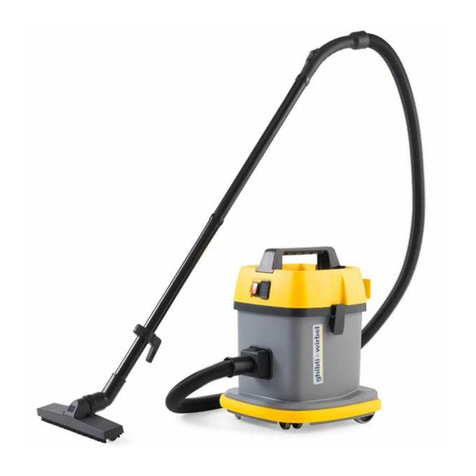
Ghibli
Ghibli AS5 User manual
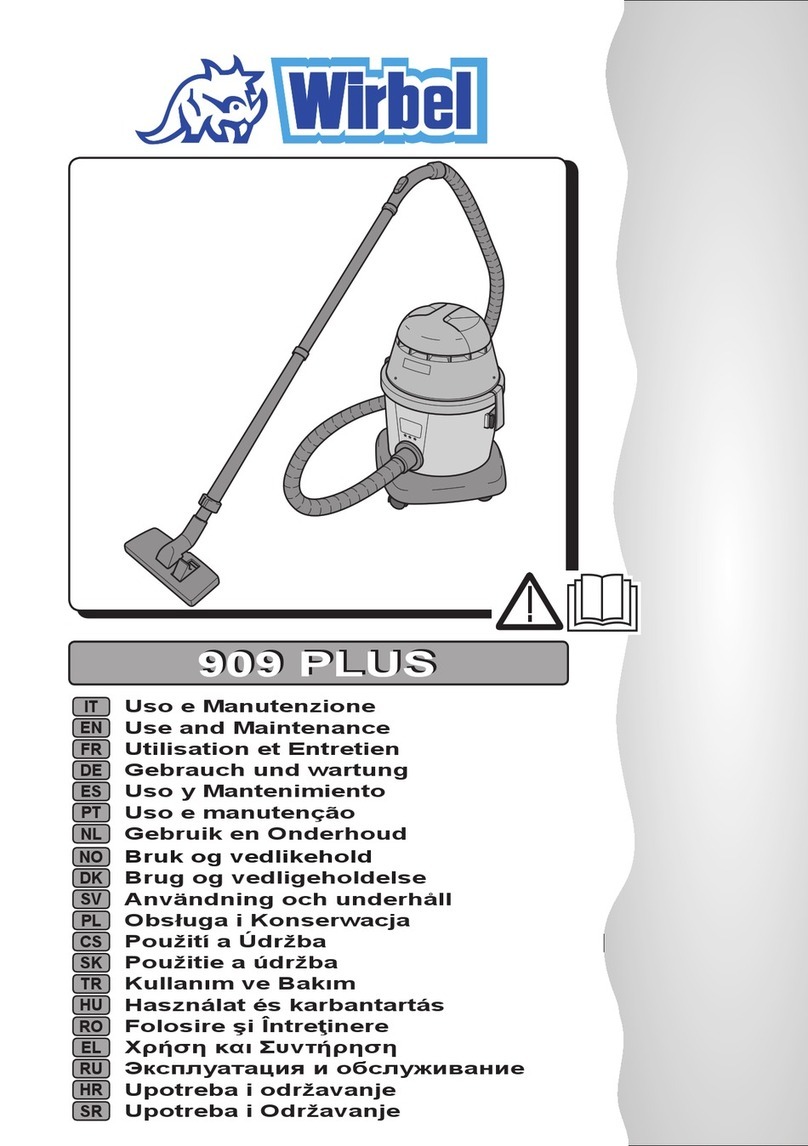
Ghibli
Ghibli Wirbel 909 PLUS User guide
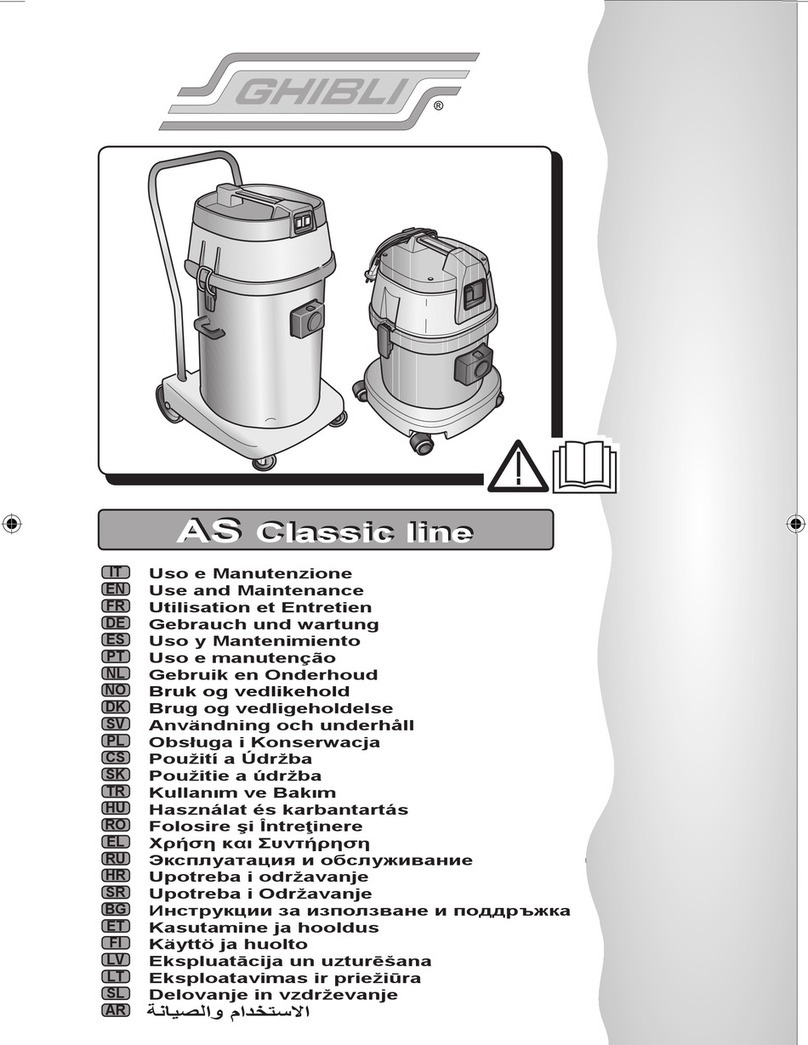
Ghibli
Ghibli AS10 User manual
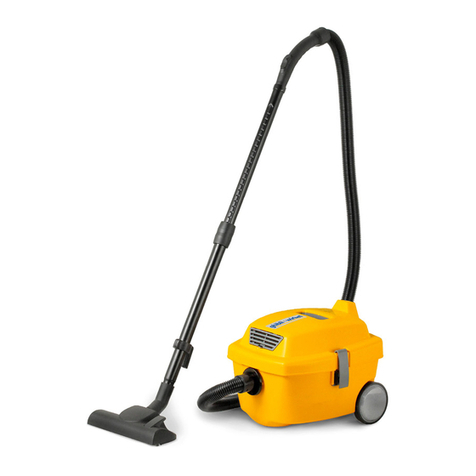
Ghibli
Ghibli AS2 User guide

Ghibli
Ghibli cleanstar T1 User guide
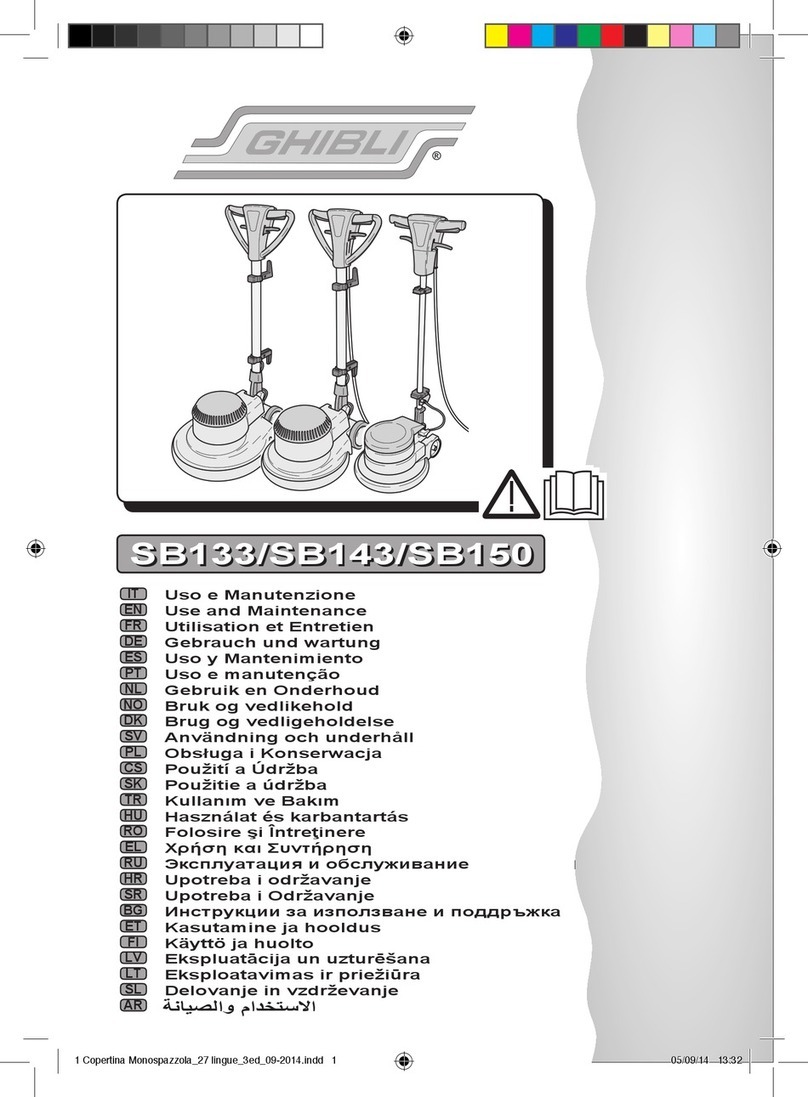
Ghibli
Ghibli SB133 User guide
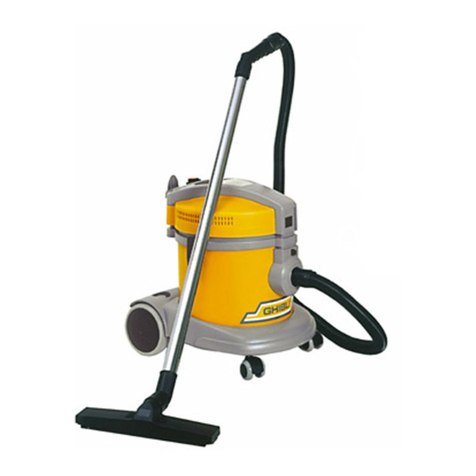
Ghibli
Ghibli AS Performance Series User guide
Popular Vacuum Cleaner manuals by other brands
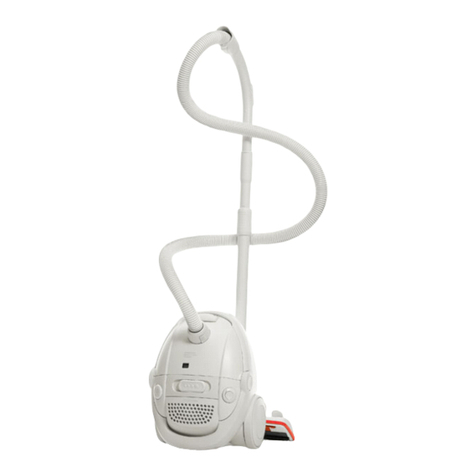
Electrolux
Electrolux ULTRA SILENCER Z3300 operating instructions

Fantom
Fantom VACUUM CLEANER FM766 instruction manual

Black & Decker
Black & Decker DVC320B manual
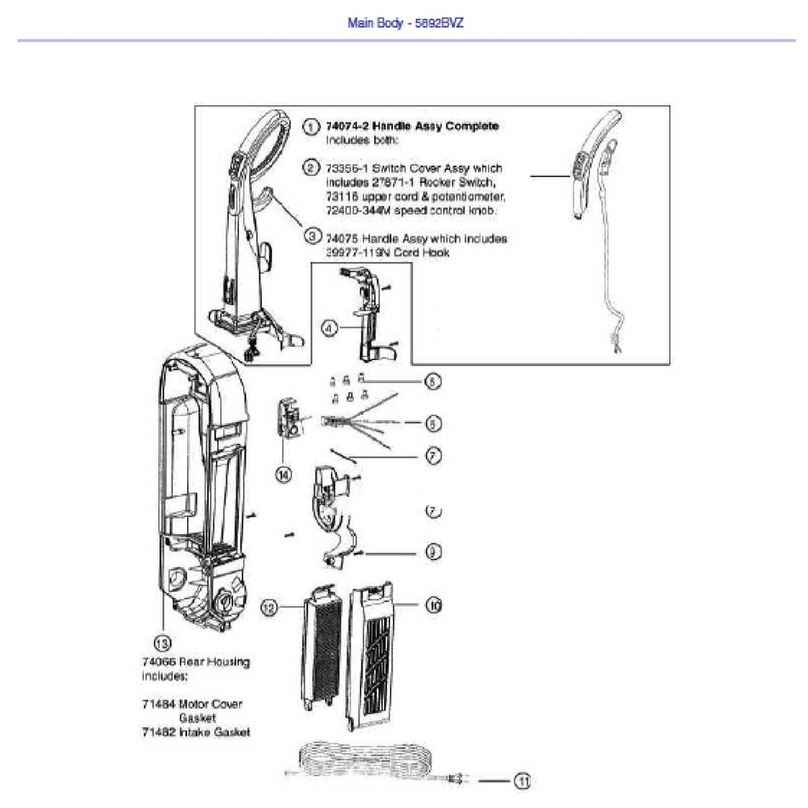
Eureka
Eureka 5892BVZ - Boss 4D HEPA Upright Vacuum parts manual
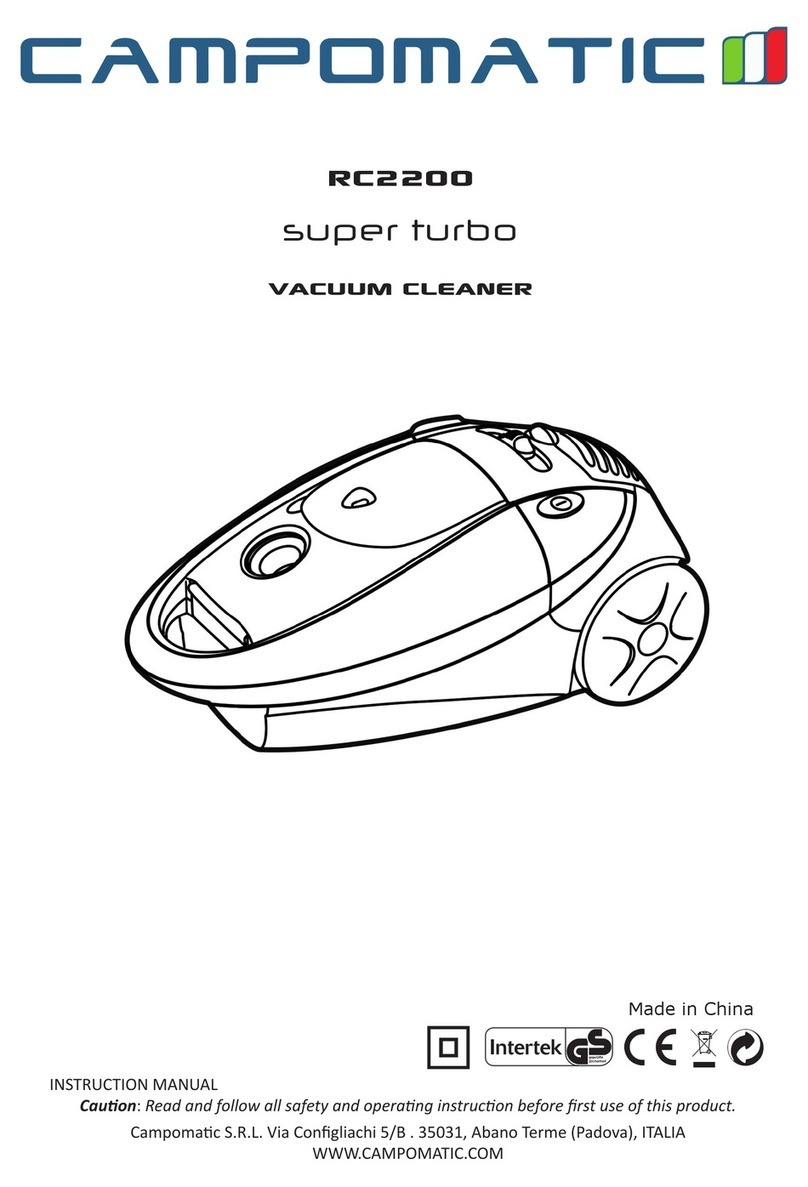
Campomatic
Campomatic RC2200 Super Turbo instruction manual
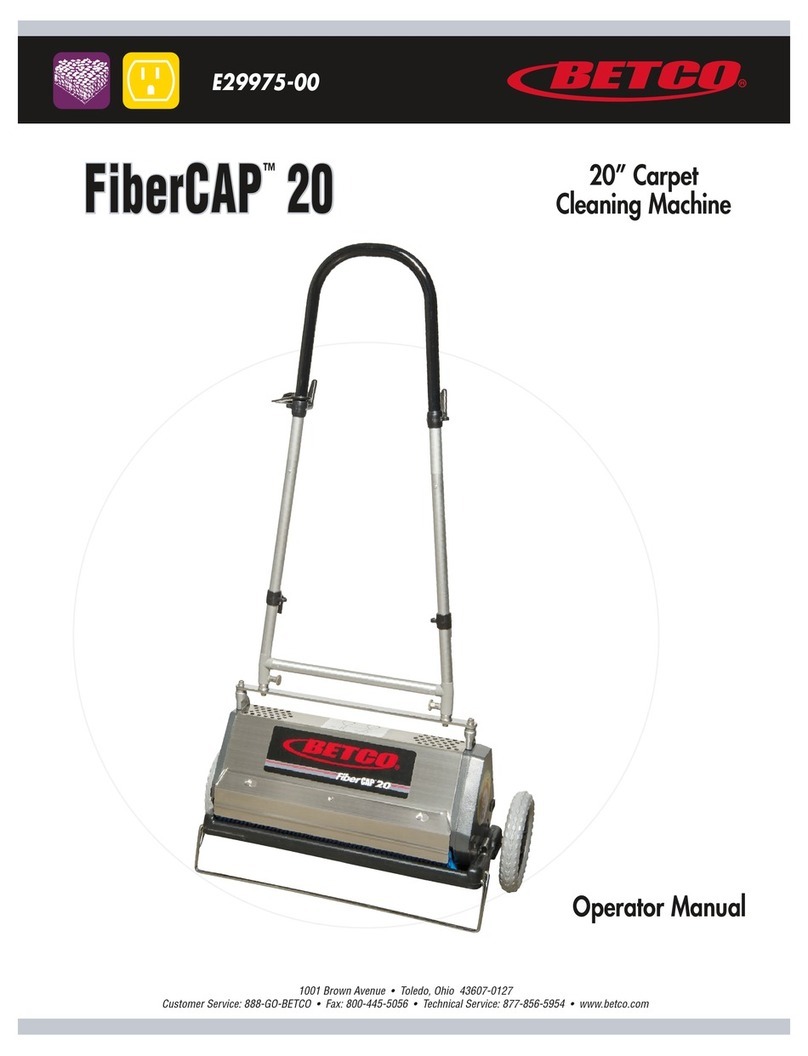
BETCO
BETCO fibercap 20 Operator's manual
